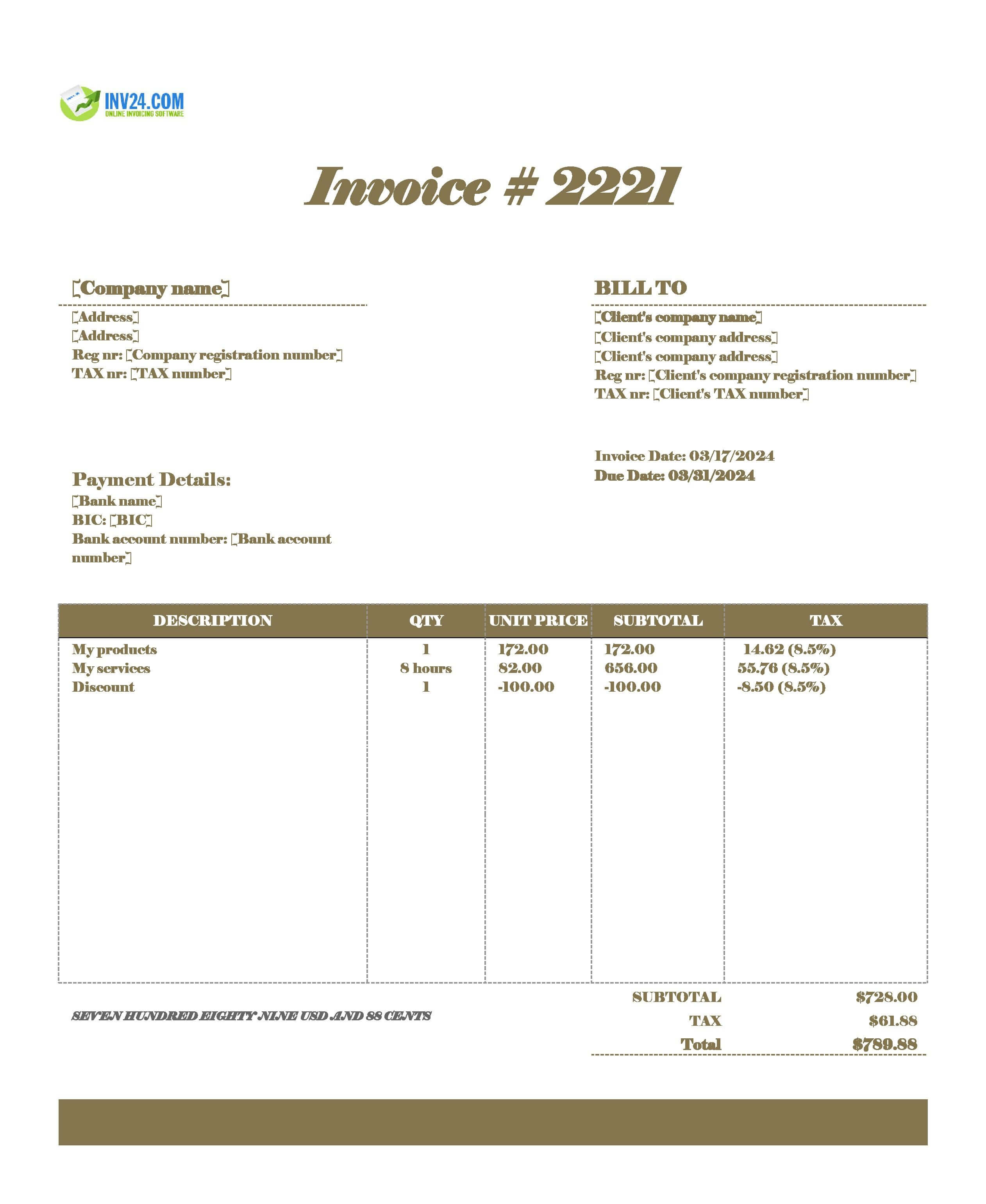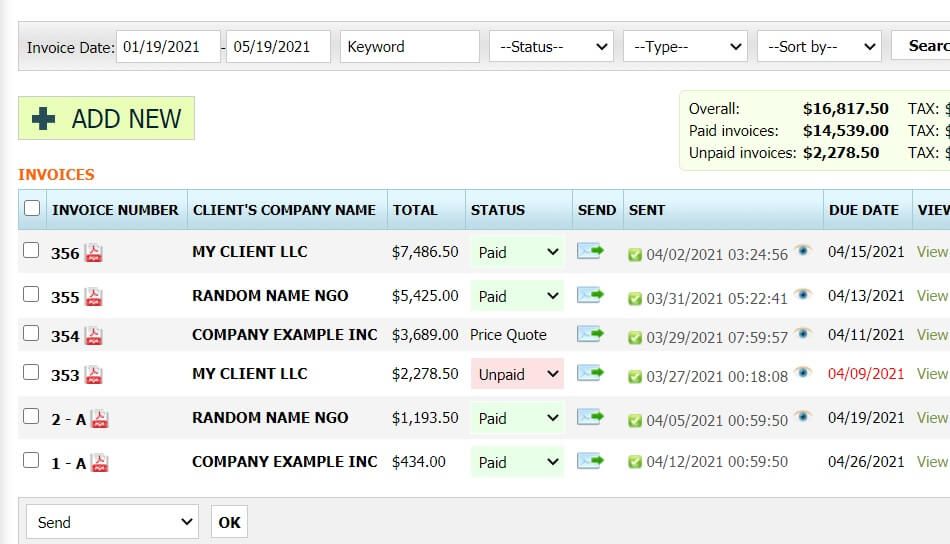Invoice with Bank Details
An invoice with bank details is when the invoice requests payment through a bank transfer. The payment through a bank transfer is the preferred choice of making payments as it is cost effective as well as efficient. Furthermore, it is considered a reliable and secure system of payment transmission.

The bank details consist of:
- Bank Name
- Bank Account Number: business account number
- Bank Identifier Code (BIC): SWIFT / BSC / ACH / ABA
Advantages and Disadvantages
Next is a table that details the advantages and disadvantages of an invoice with bank details:
| Advantages | Disadvantages |
| Bank transfer is a highly efficient mode of payment and is considered more secure than paper-based checks and payment requests. | Not all customers are confident about sharing sensitive information on invoices such as bank account details. Hence, it may not be a feasible mode of payment in all cases. |
| The payment cycle moves around financial institutions, which helps in seamless payment processing without any manual interventions. | Executing a payment via bank transfer is impossible if any of the trading partners (seller or buyer) do not have a valid bank account number. |
| Bank payments can be linked with the accounting and billing system. It means that there is no need to post journal entries or mark the invoice once payment is received. | International payments are typically expensive. |
| The cost of transactions is lower when using bank payments instead of checks and payment via cards. This makes it a financially feasible idea to use bank payment. | There is a need to ensure regulatory compliance when using bank payments. |
How to Create an Invoice with Bank Details
Method 1: Use our simple invoice software
Method 2: Download a free invoice with bank details template:
Invoicing tools:

